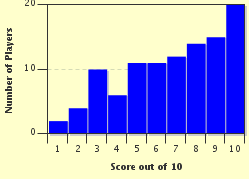Quiz Answer Key and Fun Facts
1. Which of the following symbols is used to denote that White has a decisive advantage?
2. Which of the following symbols denotes checkmate or mate?
3. A circle with a dot in the center is used to designate which of the following?
(Hint: the player to move is likely to lose.)
4. Which of the following symbols denotes not only a good move, but an excellent move?
5. What does the symbol "N" represent (as an annotation, not for a Knight)?
6. The infinity symbol after a move makes an editorial statement about a position. What does it mean?
7. You might question why, but what is the notation for an egregious blunder?
8. An arrow pointed toward the right has a significant meaning. What does it denote? (Think: Vladimir Vukovic)
9. We are nearly at the end of our quest. This question will give you a rest. Which of the following symbols denotes an equal position?
10. This annotation is represented by a single square. In French it means, le seul coup, or in Spanish it is, unica jugada. What does this mean in English?
Source: Author
christopherm
This quiz was reviewed by FunTrivia editor
WesleyCrusher before going online.
Any errors found in FunTrivia content are routinely corrected through our feedback system.

